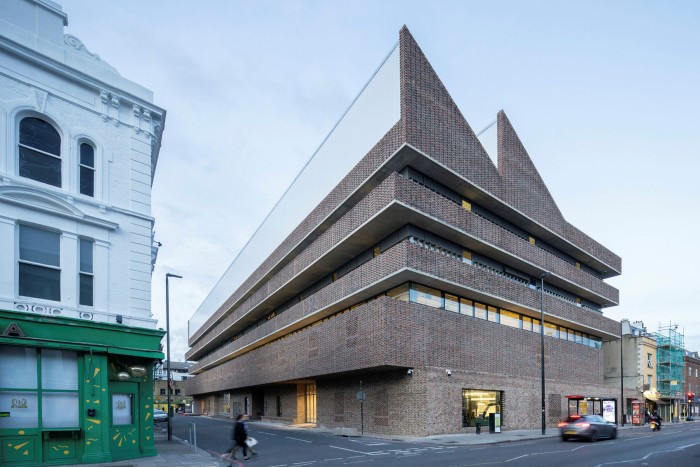The Royal College of Art’s bold new Battersea campus is a triumph of brick | Financial Times

When the Royal College of Art arrived in Battersea in 1991, it set up a curious symbiosis with its light-industrial surroundings. Strange survivals from previous incarnations of the neighbourhood as a site of manufacture and making coexisted with the new era of luxury riverside housing and architects’ offices.
Its most vivid manifestation was the way the RCA’s digital animation studios existed in one half of a modular building, the other half of which was occupied by a garage. The site was as much industry as it was creative, but it was still being gentrified. And while you might think that the arrival of arguably the world’s premier postgraduate design school would only accelerate that gentrification, the opposite case is credible, too.
That is because the RCA’s new £135mn main building is as much a place of production as learning, and it looks suitably industrial. Designed by the architects of Tate Modern, Herzog & de Meuron, it builds on that same language of bricky topography. But, unlike the Tate and its twisting tower, this is a striated cliff, a stack of tough-looking industrial brick stretched out and lining a new thoroughfare through the heart of the college’s dispersed campus. The building gives the college a sense of gravity, a force to hold it all together.
Source: The Royal College of Art’s bold new Battersea campus is a triumph of brick | Financial Times



